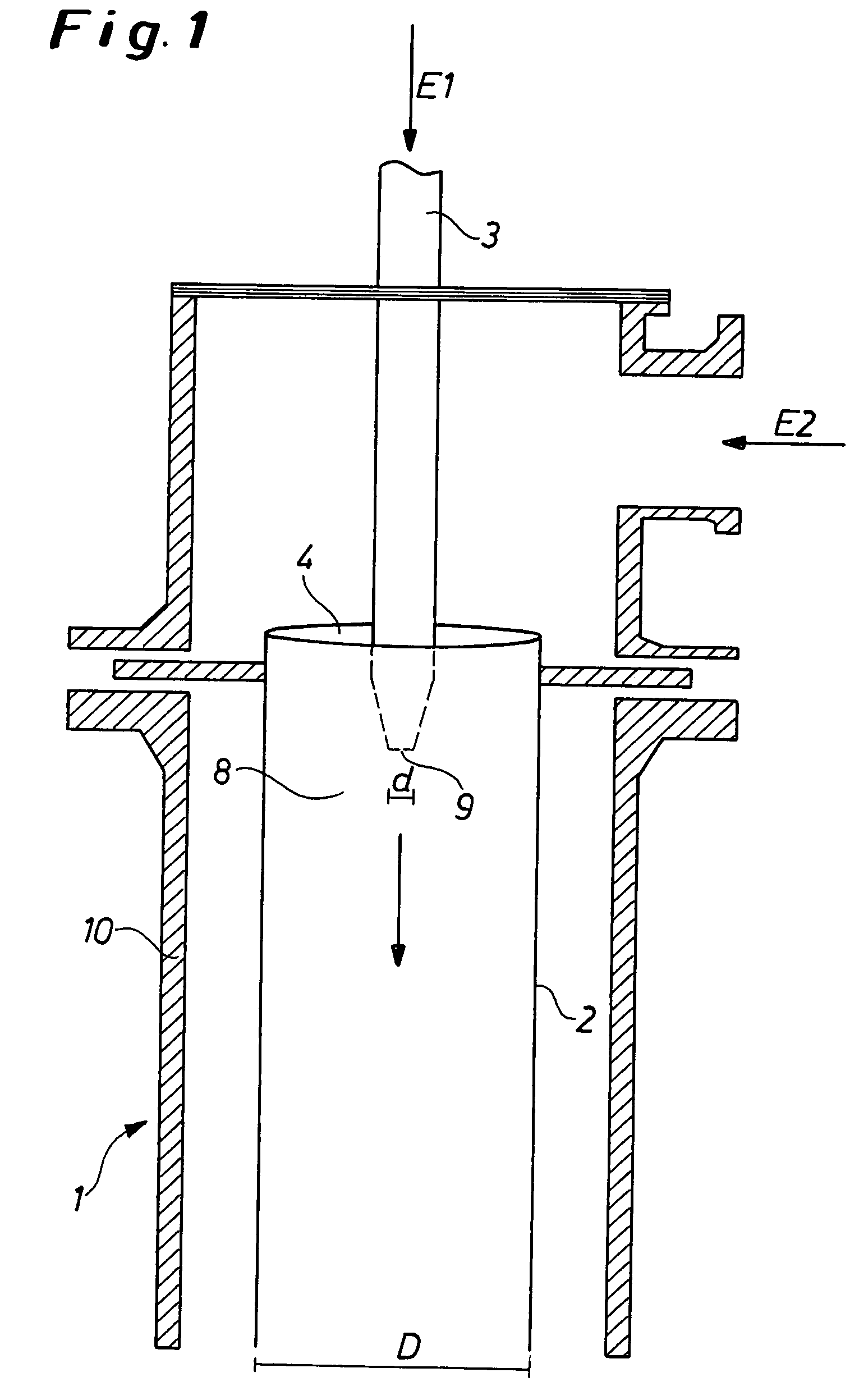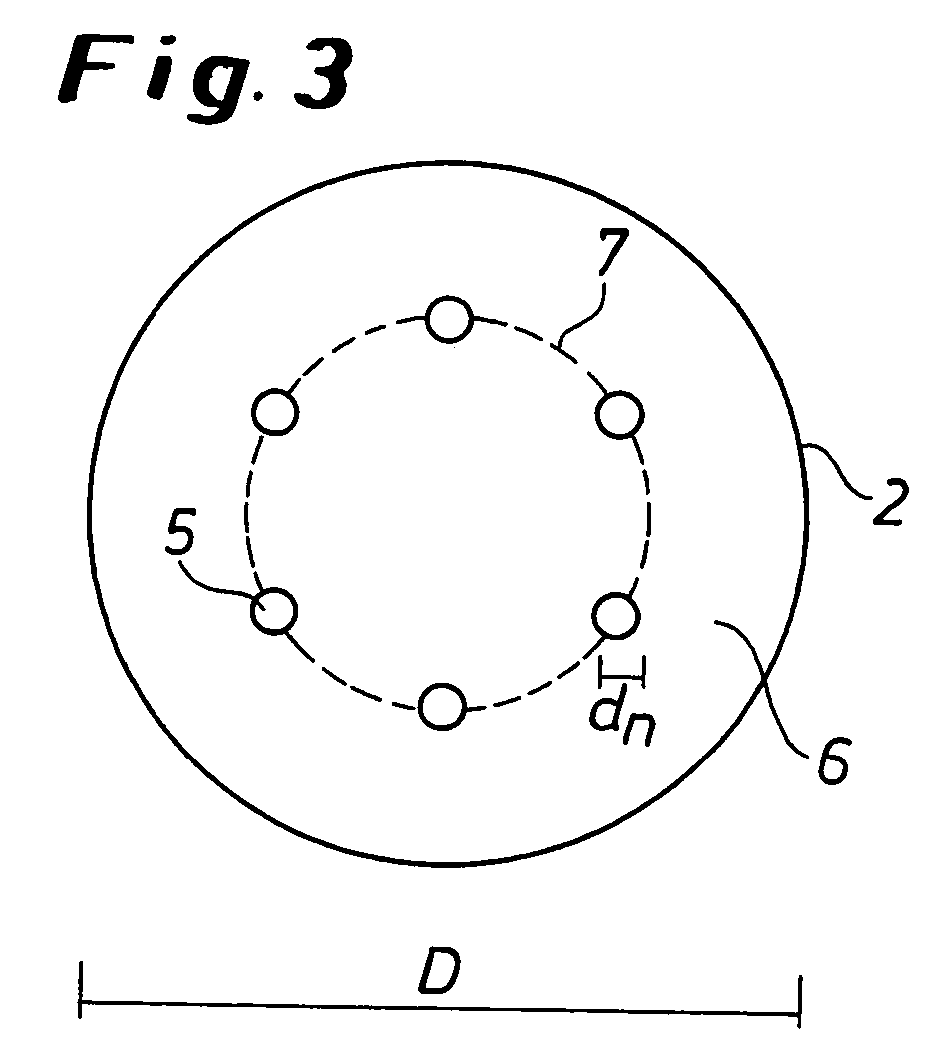Process for the manufacture of (poly-)isocyanates in the gas phase
- Summary
- Abstract
- Description
- Claims
- Application Information
AI Technical Summary
Benefits of technology
Problems solved by technology
Method used
Image
Examples
example 2
[0039]In a combined mixing and reaction tube 2 according to FIG. 2, followed by an isocyanate condensation step which, in turn, was followed by work-up of the isocyanate, an isomer mixture of 2,4- / 2,6 toluene diamine (TDA 80 / 20), phosgene and nitrogen in a molar ratio of 1:6:0.2 flowed continuously through a multi-nozzle having 6 individual nozzles 5, arranged in a circle, which protrudes into the reaction tube 2. The educts were evaporated separately from each other, in pure form, and superheated to a temperature of 340–370° C. in a preliminary heat exchanger step. A mixture of nitrogen and TDA (E1) flowed though the 6 individual nozzles 5, arranged in a circle, phosgene (E2) flowed in the remaining free space 6 around the individual nozzles 5. The ratio of the area of cross-section of reaction chamber 8 to the total area of the 6 individual nozzles 5 was (as with example 1) 192:1. The pressure in the reaction zone was 1.5 bar. The flow rate of the reaction mixture after the multi-...
PUM
| Property | Measurement | Unit |
|---|---|---|
| Temperature | aaaaa | aaaaa |
| Temperature | aaaaa | aaaaa |
| Temperature | aaaaa | aaaaa |
Abstract
Description
Claims
Application Information
 Login to View More
Login to View More - R&D
- Intellectual Property
- Life Sciences
- Materials
- Tech Scout
- Unparalleled Data Quality
- Higher Quality Content
- 60% Fewer Hallucinations
Browse by: Latest US Patents, China's latest patents, Technical Efficacy Thesaurus, Application Domain, Technology Topic, Popular Technical Reports.
© 2025 PatSnap. All rights reserved.Legal|Privacy policy|Modern Slavery Act Transparency Statement|Sitemap|About US| Contact US: help@patsnap.com



